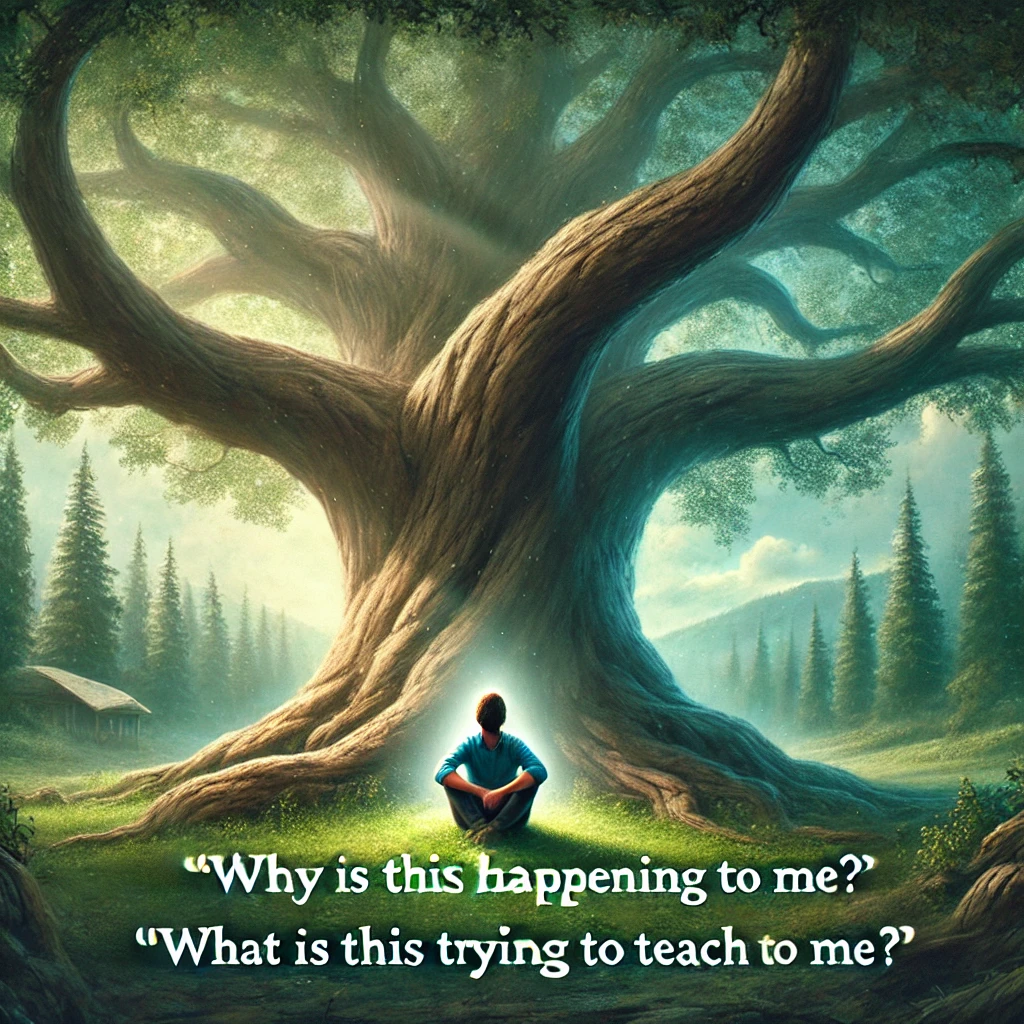Shifting one’s perspective from “Why is this happening to me?” to “What is this trying to teach me?” represents a transformative approach to dealing with life’s challenges. This change in mindset is not just about finding silver linings but about fostering personal growth and resilience. Here’s a deeper exploration of this philosophy, humanizing the concept and discussing its implications.
Understanding the Shift
From Victim to Learner: The question “Why is this happening to me?” is often rooted in a victim mentality. It implies passivity and helplessness, suggesting that life happens to us, not for us. In contrast, asking “What is this trying to teach me?” empowers an individual. It suggests that within every challenge lies an opportunity to learn something valuable. This shift encourages one to take an active role in their response to life’s challenges.
Humanizing the Experience
Personal Stories: Everyone faces challenges, but the stories of how people overcome them can be profoundly inspiring. Consider someone who has lost a job; initially, they might feel defeated and wonder why it happened to them. However, by shifting their perspective to what they can learn from the experience, they might discover new professional paths or personal strengths they weren’t aware of. This learning perspective doesn’t diminish the pain or difficulty of the situation but adds a layer of meaning and potential for growth.
Empathy and Connection: This mindset encourages deeper connections with others. When you approach life’s challenges as lessons, you become more open to sharing your experiences and learning from others. This can lead to increased empathy, as you recognize that everyone is on a learning journey, each with their unique struggles and lessons.
Practical Applications
In Daily Life: Small frustrations like traffic jams or disagreements at work can be reframed as opportunities to develop patience or improve communication skills. Instead of frustration, one might ask, “What can this situation teach me about managing my emotions or understanding others’ viewpoints?”
In Major Life Events: More significant challenges, such as illness or loss, can profoundly test one’s resilience. Here, the learning-focused question might lead to discoveries about personal strength, the importance of community, or the value of health and time.
The Role of Mindfulness
Awareness: Mindfulness plays a crucial role in this mindset shift. Being aware of your thoughts and reactions allows you to consciously choose to ask more constructive questions.
Acceptance: It also involves accepting the present moment as it is, not as you wish it were, which can reduce resistance and open the door to learning.
Challenges to the Shift
Resistance: Changing one’s perspective is not always easy, especially during emotionally charged events. The initial reaction can often be one of resistance or denial.
Time and Practice: Like any skill, developing this mindset takes time and practice. It may require support from friends, mentors, or professionals, and it often involves setbacks along the way.
The Shift
Shifting from questioning “Why is this happening to me?” to exploring “What is this trying to teach me?” is a powerful adjustment that can transform how we experience life’s ups and downs. This approach doesn’t trivialize one’s challenges but instead enriches the human experience, making each hurdle a stepping stone to deeper understanding and personal growth. By embracing this perspective, individuals can navigate life not just with greater resilience but with a proactive zeal for the lessons it holds.
Cheers,
Gage Gorman
